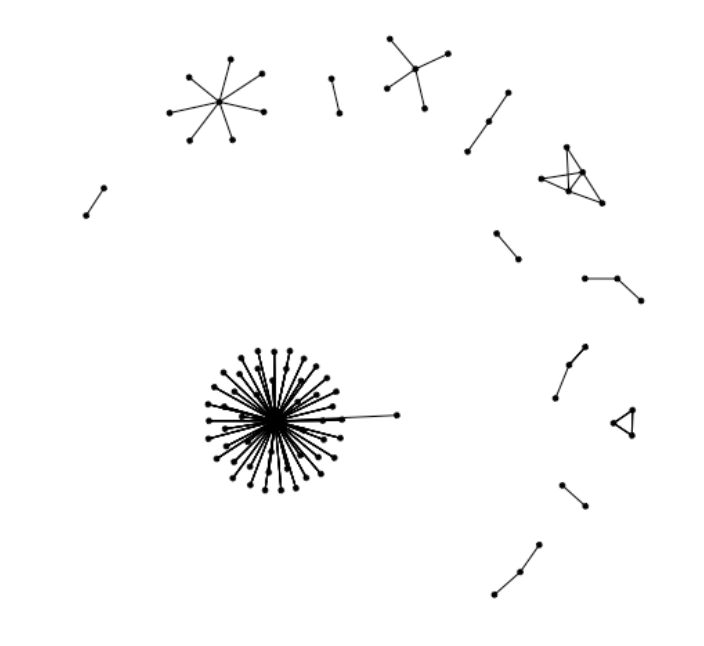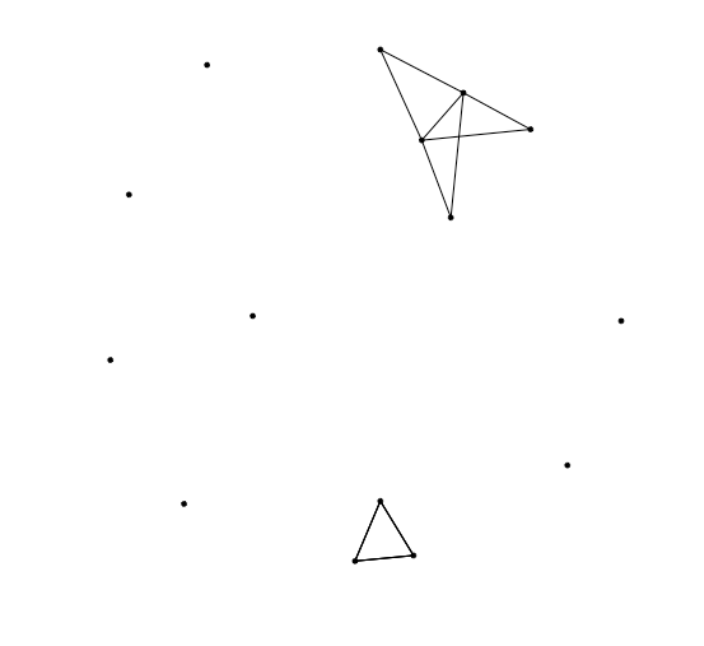Group Identification in Networks
SNA Module 3: A Conceptual Overview
A Quick Refresher
Data Management
Collection
Quality
Edge List Creation
Network Terms
Centrality
Density
Reciprocity
Overview
Unlike most social science, network analysts identify groups through their relational data, not an exogenous attribute such as grade level, departmental affiliation, or years of experience. (Carolan 2014)
There are two main approaches to group identification in networks:
Top Down (e.g., components & communities)
Bottom Up (e.g, cliques, cores, & clans)
Top Down Approaches
Components, Bi-Components, & Factions
Components
A component is a connected subgraph in which there is a path between all pairs of nodes.
How many “components” do you see in the network to the right?

Bi-Components
Bi-components help to identify the important “weak” spots and ask what would happen to the network if an actor were removed.
Nodes that result in new components are referred to as “cutpoints” and are often important actors.

Factions
A faction is a group with more ties within than across group even those group boundaries are somewhat porous.
Factions are identified by various community detection algorithms to represent these structural sub-communities.
Discussion
Consider the following questions about a network you may be interested in studying:
What is the boundary of this network?
What relations within this network might be of interest to your research?
What attributes about actors in this network might you want to capture?
How might you collect data about these actors and their relations?
Bottom Up Approaches
Cores, Cliques, & Clans
K-Cores
A K-core is a substructure (a subgraph) of the network in which each node within the K-core is connected to at least K other nodes. Therefore, a 2K-core would be a subset of actors in which a node is connected to two others.

Cliques
A n-clique is a maximally connected subgraph of nodes (> 2) in which all nodes are connected to each other.
Are there any cliques in the graph to the right? K-cores? Isolates?

Clans
Actors in the same clan are all connected at n distance, n (or less), and all actors in between are also members of the same clan.

Discussion
Think about a network you are a part of or may be interested in studying and consider the following questions:
What groups might exist in this network?
How might you go about identifying them?
How might this information be useful?
Essential Readings
The following chapters in Carolan (2014) cover the topics introduced in this conceptual overview in much greater depth:
In preparation for the Module 3 Code-Along and Case Study, take a look at the #COMMONCORE project by Supovitz et al. (2017).
Acknowledgements

This work was supported by the National Science Foundation grants DRL-2025090 and DRL-2321128 (ECR:BCSER). Any opinions, findings, and conclusions expressed in this material are those of the authors and do not necessarily reflect the views of the National Science Foundation.

